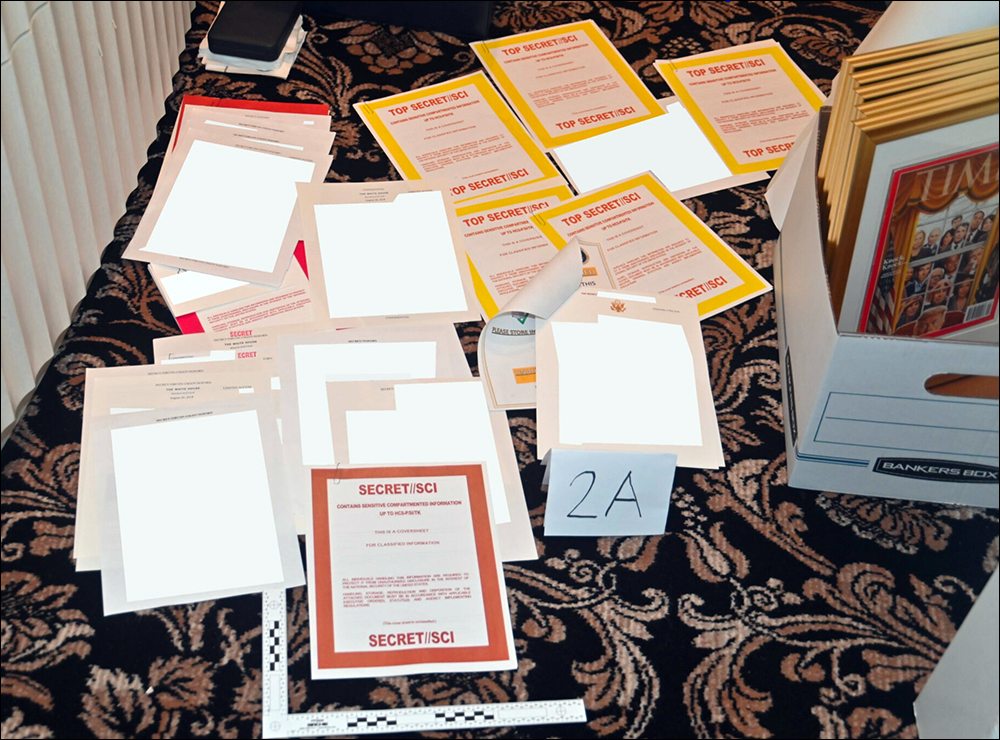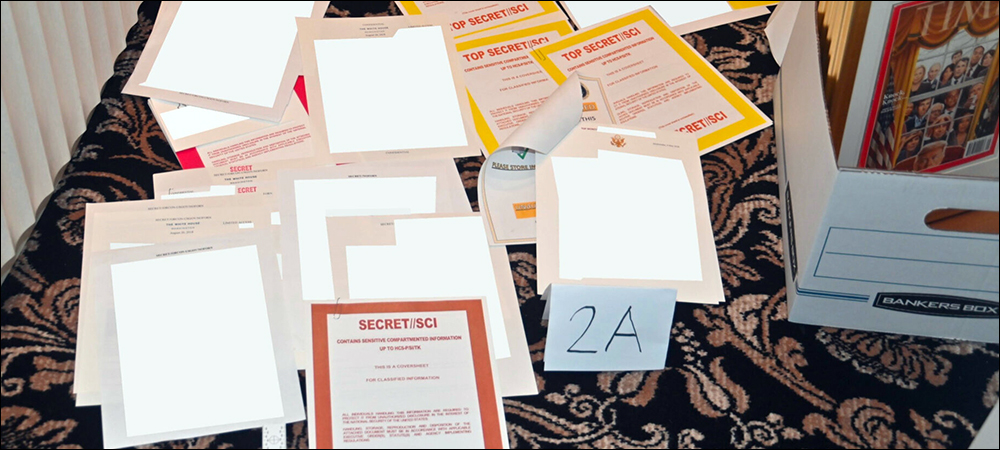RFID Journal LIVE! 2023 will feature end-user companies discussing RFID’s use in various industries, as well as exhibitors offering tagging solutions for multiple applications, including document tracking. To learn more, visit the event’s website.
- Passive UHF RFID Systems for Document Tracking
- Flexible Electronics Harvest Energy for Real-Time Transmissions
- Compostable Electronics and BLE, Wi-Fi or RFID
Last month, the world was asking how hundreds of classified documents could be mishandled or misplaced by national leaders. This discussion leads to a second question: how the United States’ National Archives could ensure no other documents are missing. Recent news stories about classified material being stored in closets and personal offices (first those of former President Donald Trump, then President Joe Biden and former Vice President Mike Pence) brings to light an uncomfortable reality: once a document leaves a secured area, tracing it poses a major challenge.
That’s true whether documents are handled by a private small business owner or the leader of the free world. While each of the highly covered classified document cases has had its own distinct details, the fact that documents which should be secured properly have ended up in the homes, offices or garages of at least two Presidents and one Vice President signals that document-tracking solutions might be in order.

Classified documents found in the home of Donald Trump
Researchers at Finland’s Tampere University and The Ohio State University have been developing technology that could serve as a solution in the form of an energy-harvesting RFID tag that could be printed on or applied to important documents. Researcher Paul Berger speculates that technology which could affordably track paperwork or files located anywhere is not so far away. Berger is an Ohio State University professor of electrical and computer engineering, as well as a visiting professor at Tampere University.
Passive UHF RFID Systems for Document Tracking
Some HF or UHF RFID systems are already in place to automate the tracking of paperwork. With a passive RFID system, readers that capture transmissions from tagged documents are being installed in the ceilings of storage areas, or as portals in doorways, to identify when they leave secure areas (see Print and Document Integrity Solutions Company Brings Flexible RFID to Customers, Kuwait’s Ministry of Justice Assesses RFID File Tracking and Law Firm Uses RFID to Track Every Page of Confidential Documents). Companies such as FileTrail also offer an RFID-enabled document-management solution.
Schools, agencies and private companies are using RFID tags and handheld readers to seek out missing documents that might be moved around a facility or into individual offices within a building. The approach is straightforward: Users can input data about the specific documents they seek into a handheld reader running a document-tracking app, and the reader will then act like a Geiger counter, emitting audible sounds when it comes within range of those documents (or other office assets).
However, knowing where a piece of paper is located as it travels outside of a secure area or building poses another challenge. Without a reader in its vicinity, a passive RFID tag will not help anyone searching for the document to which it is attached. RFID’s advantage is its low-cost tag, which does not require a battery. This passive response may not be sufficient, though, if an agency like the National Archives simply wanted to know in real time where their documents were.
Flexible Electronics Harvest Energy for Real-Time Transmissions
The Internet of Things enables a broader set of options that can accommodate other transmission technologies to get data to a server without the presence of a reader. To gain a real-time view into where documents are located, no matter where they go, would require power. Tags on documents would need their own power source to emit a signal that could reach a server located anywhere. That, Berger says, could be made possible with flexible electronics, using systems that would draw ambient energy from light and Wi-Fi.

Paul Berger
The development of such technology, in fact is currently underway at Tampere University’s Laboratory for Future Electronics. The lab has been developing flexible electronics that could be printed on sticker labels attached to documents, or that could be printed directly into the documents’ paper. Berger, leading some of the laboratory’s research, sees great potential for the use of flexible electronics for document tracking.
Thus far, work has centered around creating flexible electronics that are tethered to a sensor. That sensor could be anything from a wearable device such as a heart monitor to an RFID tag. The flexible electronics could be printed to keep the cost of materials and manufacturing down, and they would leverage a variety of energy sources from the environment to send messages. In the case of document tracking, Berger cites the use of a printed RFID antenna and IC linked to energy-harvesting electronics that capture power from an area Wi-Fi signal, or from light.
The Tampere University team has built potential examples, such as an organic solar cell with a printed rectifying diode that can scavenge energy from the environment when the lights are on. The team attached this device to a chocolate box. If the lights were off (such as might be the case at a grocery store during the night), the system could still scavenge energy from Wi-Fi and store it in a non-toxic supercapacitor. The chocolate box device scavenges energy from the two modalities and stores it in the supercapacitor, which Berger calls a variant of activated carbon, similar to what could be found in a fish aquarium filter.
Going beyond identification and location, such technologies could be tethered to a temperature sensor. Then, in the case of the chocolate box device, the sensor chip would detect temperature changes and use ambient energy to power an electrochromic display, which would indicate the temperature to which the box was exposed.
Compostable Electronics and BLE, Wi-Fi or RFID
The team has another project with the acronym SOIL, which consists of printed sensor nodes that could potentially be compostable for use in agriculture. The aim, Berger says, is to enable the selection of raw materials according to the application. For instance, if a sensor were used to track conditions in the soil of a field, the device could be designed to naturally leech healthy materials into its environment. “Maybe the soil is low in a particular nutrient,” Berger says—magnesium, for instance. If that were the case, the sensor device material could include traces of magnesium.
Following the news around document tracking, Berger poses the question: What if flexible electronics sensors could be printed on documents or be attached to them in the form of a label? A tag capturing ambient energy could transmit data via RFID to readers in the area, but they could also transmit via Bluetooth Low Energy (BLE) to a user’s smartphone in the vicinity, or via Wi-Fi or cellular transmissions.
Devices that are currently tracking luggage or other personal belongings are an example of this application. AirTag, Tile and Galaxy SmartTags each use BLE technology and leverage Bluetooth transmissions from local-area phones and other devices to identify their location and transmit their position to the cloud, where the tag’s owner can then view that location. Ultra-wideband (UWB) technology is also used in some scenarios, to provide very specific location data.
All of these commercial devices employ battery power, but the energy-harvesting functionality, with the very small, lightweight opportunities of flexible electronics, takes that same solution to the level of a single piece of paper with a small battery-free tag. PragmatIC, an Avery Dennison company, makes RFID tags that it calls FlexICs, which contain printed electronics. Its ICs are thinner than a human hair, the company reports, and can be embedded into an object, such as a product label, to make it intelligent.
To date, the technology has been used for tracking fast-moving consumer goods, for the circular economy (such as managing recycling efforts), and for monitoring healthcare and medical products (see Beverage Recycling Project to Boost Bottle Returns with NFC and Global Packaging Company Invests in NFC and RFID Solutions). No such solution for real-time paperwork management is commercially available at present, but Berger says challenges like the tracking of classified documents should inspire development.
If a Delaware or Florida house, or an Indiana office, has a Wi-Fi network, or if Bluetooth-enabled devices are in the vicinity, technology-based solutions could be made available. Printed, flexible electronics will be essential to such solutions, Berger notes. “You can’t wallpaper the world with silicon,” he states. “There’s just not enough silicon IC chips,” or factories in which to make them.
Key Takeaways:
- Researchers and technology companies are developing wireless sensors that could locate documents wherever they might be, without requiring a battery.
- Early development finds that an RFID tag, a Bluetooth device or another wireless transmitter could be printed and linked to a sensor device, which could then send a signal to indicate its location.


